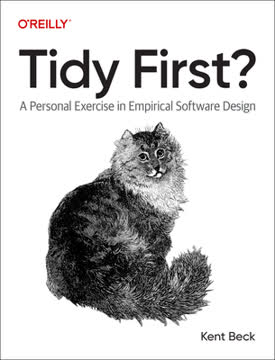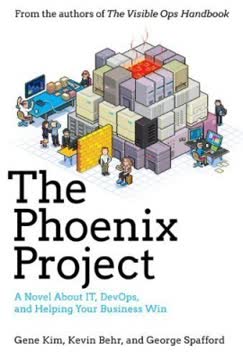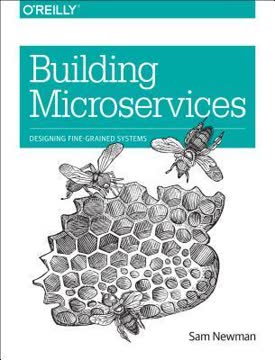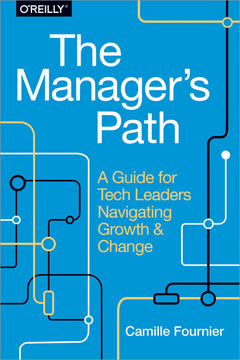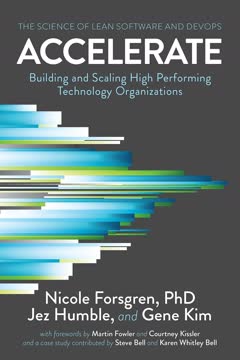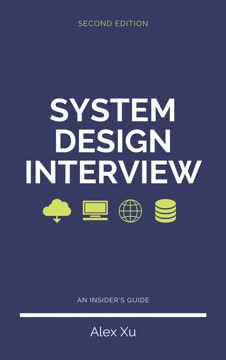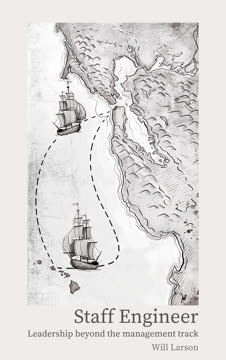പ്രധാന നിർദ്ദേശങ്ങൾ
1. മറ്റുള്ളവരെ നിയന്ത്രിക്കുന്നതിന് മുമ്പ് സ്വയം നിയന്ത്രിക്കുക
നിങ്ങളുടെ തലയിൽ όσο കുറവ് വിവരങ്ങൾ സൂക്ഷിക്കാനാണ് നിങ്ങൾ ആഗ്രഹിക്കുന്നത്.
നിങ്ങളുടെ പ്രവൃത്തി പ്രവാഹം ക്രമീകരിക്കുക. മാനേജറായി, വിവരങ്ങൾ നിങ്ങളുടെ ഏറ്റവും വിലപ്പെട്ട സ്വത്താണ്. പ്രവർത്തനങ്ങൾക്കും വിവരങ്ങൾക്കും മുൻഗണന നൽകുന്നതിനും ക്രമീകരിക്കുന്നതിനും ഒരു സംവിധാനം നടപ്പിലാക്കുക. സമയം ക്രമീകരിക്കാൻ നിങ്ങളുടെ കലണ്ടർ ഉപയോഗിക്കുക, പ്രവർത്തനങ്ങൾക്കായി ഒരു ടു-ഡു ലിസ്റ്റ്, വരുന്ന സന്ദേശങ്ങൾക്കായി ഇമെയിൽ ഇൻബോക്സ്, യാത്രയിൽ വിവരങ്ങൾ പിടികൂടുന്നതിനായി ഒരു വേർതിരിച്ച ഉപകരണം. ഈ സംവിധാനം നിങ്ങളുടെ ഉത്തരവാദിത്തങ്ങൾ നിയന്ത്രിക്കാൻ സഹായിക്കും, തന്ത്രപരമായ ചിന്തയ്ക്കായി മാനസിക സ്ഥലം സ്വതന്ത്രമാക്കും.
നിങ്ങളുടെ ഊർജ്ജം നിയന്ത്രിക്കുക. നിങ്ങളുടെ ഊർജ്ജവും മനോഭാവവും നിങ്ങളുടെ ടീമിനെ ബാധിക്കുന്നുവെന്ന് തിരിച്ചറിയുക. ദിവസമൊട്ടാകെ നിങ്ങളുടെ അവസ്ഥയെ ശ്രദ്ധിക്കുക, അത് നിയന്ത്രിക്കാൻ നടപടികൾ സ്വീകരിക്കുക. നിങ്ങൾ നിരാശയോ സമ്മർദ്ദത്തിലോ ആണെങ്കിൽ, നിങ്ങളുടെ ടീമുമായി ഇടപഴകുന്നതിന് മുമ്പ് ഒരു നിമിഷം പുനഃക്രമീകരിക്കുക. മാനേജറായി നിങ്ങളുടെ പങ്ക് ഒരു സ്ഥിരതയുള്ള ശക്തിയാകുക എന്നതാണ്, അതിനാൽ സ്വയം ബോധവും വികാര നിയന്ത്രണ കഴിവുകളും വളർത്തുക.
2. ആശയവിനിമയവും ചുമതല നൽകലും അനിവാര്യമായ മാനേജീരിയൽ കഴിവുകളാണ്
അവരുടെ തലയിൽ ചിന്താ ബബിൾ സൂക്ഷിക്കുക.
ആശയവിനിമയം കൈകാര്യം ചെയ്യുക. ഫലപ്രദമായ ആശയവിനിമയം വിജയകരമായ മാനേജ്മെന്റിന്റെ അടിസ്ഥാനം ആണ്. വ്യത്യസ്ത മാധ്യമങ്ങളിലേക്കും വ്യക്തികളിലേക്കും നിങ്ങളുടെ ആശയവിനിമയ ശൈലി ഇണങ്ങാൻ പഠിക്കുക. സജീവമായ കേൾവിയിൽ പരിശീലിക്കുക, തുറന്ന ചോദ്യങ്ങൾ ചോദിക്കുക, വ്യക്തവും സംക്ഷിപ്തവുമായ വിവരങ്ങൾ നൽകുക. "റാഡിക്കൽ കാൻഡർ" എന്ന ആശയം ഉപയോഗിച്ച് ദയയോടും നേരിട്ടും ഫീഡ്ബാക്ക് നൽകുക.
തന്ത്രപരമായി ചുമതല നൽകുക. ചുമതല നൽകൽ വെറും പ്രവർത്തനങ്ങൾ ഏൽപ്പിക്കുന്നതല്ല; അത് നിങ്ങളുടെ ടീമിനെ ശക്തിപ്പെടുത്തുകയും അവരുടെ സാധ്യത പരമാവധി ഉപയോഗപ്പെടുത്തുകയും ചെയ്യുന്നതാണ്. ഓരോ പ്രവർത്തനത്തിനും ടീമംഗത്തിനും അനുയോജ്യമായ പിന്തുണയുടെ തലം നിർണ്ണയിക്കാൻ ചുമതല നൽകൽ സ്കെയിൽ ഉപയോഗിക്കുക. നിങ്ങൾ ഉത്തരവാദിത്തം ചുമതലപ്പെടുത്തുന്നു, ഉത്തരവാദിത്വം അല്ല എന്ന് ഓർക്കുക. ഫലപ്രദമായ ചുമതല നൽകൽ നിങ്ങളുടെ ടീമിന്റെ കഴിവുകൾ ഉപയോഗപ്പെടുത്താനും ഉയർന്ന പ്രഭാവമുള്ള മാനേജീരിയൽ പ്രവർത്തനങ്ങളിൽ ശ്രദ്ധ കേന്ദ്രീകരിക്കാനും നിങ്ങളെ അനുവദിക്കുന്നു.
3. ഏകദേശം-ഒന്നിലൊന്ന് ഫലപ്രദമായ മാനേജ്മെന്റിന്റെ കോണ്സ്റ്റോൺ ആണ്
ഏകദേശം-ഒന്നിലൊന്ന് യോഗങ്ങൾ നിങ്ങൾ മാനേജറായി നടത്തേണ്ട ഏറ്റവും പ്രധാനപ്പെട്ട സ്ഥിരമായ പ്രവർത്തനങ്ങളിൽ ഒന്നാണ്.
നിങ്ങളുടെ ഏകദേശം-ഒന്നിലൊന്ന് ക്രമീകരിക്കുക. ഓരോ ടീമംഗത്തോടും ഏകദേശം-ഒന്നിലൊന്ന് യോഗങ്ങൾക്കായി ഒരു സ്ഥിരമായ കാഡൻസ് സ്ഥാപിക്കുക. ഒരു പങ്കിട്ട രേഖ ഉപയോഗിച്ച് തുടർച്ചയായ അജണ്ടയും പ്രവർത്തന ഇനങ്ങളും ട്രാക്ക് ചെയ്യുക. പ്രതീക്ഷകൾ സജ്ജമാക്കാനും പരസ്പര പ്രവർത്തന ശൈലികൾ മനസ്സിലാക്കാനും "കോൺട്രാക്ടിംഗ്" വ്യായാമം ഉപയോഗിച്ച് പുതിയ ബന്ധങ്ങൾ ആരംഭിക്കുക.
അത് അവരുടെ യോഗമാക്കുക. നിങ്ങളുടെ ടീമംഗങ്ങളെ അജണ്ട നയിക്കാനും കൂടുതൽ സംസാരിക്കാനും പ്രോത്സാഹിപ്പിക്കുക. സംഭാഷണം നയിക്കാൻ തുറന്ന ചോദ്യങ്ങൾ ഉപയോഗിക്കുക, പ്രശ്നങ്ങളോ അവസരങ്ങളോ കണ്ടെത്തുക. വിഷയങ്ങളിൽ ഉൾപ്പെടാം:
- നിലവിലെ പദ്ധതികളിലെ പുരോഗതി
- കരിയർ വികസന ലക്ഷ്യങ്ങൾ
- വെല്ലുവിളികളോ തടസ്സങ്ങളോ
- ഫീഡ്ബാക്ക് (രണ്ടുവഴിയും)
- വ്യക്തിപരമായ ക്ഷേമം
ഏകദേശം-ഒന്നിലൊന്ന് സ്റ്റാറ്റസ് അപ്ഡേറ്റ് യോഗങ്ങൾ അല്ല, മറിച്ച് ആഴത്തിലുള്ള ബന്ധത്തിനും വികസനത്തിനും അവസരങ്ങളാണ് എന്ന് ഓർക്കുക.
4. ടീമിന്റെ പ്രകടനം പരമാവധി ഉപയോഗപ്പെടുത്താൻ വ്യക്തിഗത പ്രേരണകൾ മനസ്സിലാക്കുക
ജോലി ചെയ്യാൻ ശരിയായ വ്യക്തിയെ കണ്ടെത്തുക എന്നതല്ല, വ്യക്തിക്ക് ശരിയായ ജോലി കണ്ടെത്തുക എന്നതാണ്.
മാസ്ലോയുടെ ഹിയറാർക്കി പ്രയോഗിക്കുക. നിങ്ങളുടെ ടീമംഗങ്ങൾക്ക് ശമ്പളത്തിന് പുറമെ ആവശ്യകതകൾ ഉണ്ടെന്ന് തിരിച്ചറിയുക. അവരുടെ ഉയർന്ന തലത്തിലുള്ള ആവശ്യകതകൾ പിന്തുണയ്ക്കുന്ന ഒരു അന്തരീക്ഷം സൃഷ്ടിക്കാൻ ശ്രമിക്കുക:
- പറ്റിയിരിക്കുക: ടീമിന്റെ ഐക്യം, ഉൾപ്പെടുത്തൽ പ്രോത്സാഹിപ്പിക്കുക
- സ്വാഭിമാനം: അംഗീകാരം, വളർച്ചാ അവസരങ്ങൾ നൽകുക
- സ്വയം-ആക്റ്റ്വലൈസേഷൻ: വ്യക്തിഗത ലക്ഷ്യങ്ങളുമായി, മൂല്യങ്ങളുമായി ജോലികൾ പൊരുത്തപ്പെടുത്തുക
വ്യക്തിഗത ശക്തികൾ ഉപയോഗിക്കുക. ടീമംഗങ്ങൾക്ക് വ്യത്യസ്ത പ്രേരണകളും പ്രവർത്തന ശൈലികളും ഉണ്ടെന്ന് മനസ്സിലാക്കുക. ചിലർ സ്ഥിരതയിലും പ്രാവീണ്യത്തിലും (കത്തീഡ്രൽ നിർമ്മാതാക്കൾ) വളരുന്നു, മറ്റുള്ളവർ വൈവിധ്യത്തിനും പുതിയ വെല്ലുവിളികൾക്കും (ബസാർ ബ്രൗസറുകൾ) ആഗ്രഹിക്കുന്നു. ഈ വ്യക്തിഗത മുൻഗണനകൾക്ക് പൊരുത്തപ്പെടുന്ന രീതിയിൽ ചുമതലകളും വികസന അവസരങ്ങളും ക്രമീകരിക്കുക, വളർച്ചയും പങ്കാളിത്തവും പ്രോത്സാഹിപ്പിക്കാൻ ടീമംഗങ്ങളെ അവരുടെ "സോണോഫ് പ്രോക്സിമൽ ഡെവലപ്മെന്റ്" ൽ സൂക്ഷിക്കുക.
5. നിയമനവും ജീവനക്കാരുടെ പുറപ്പെടലുകളും സംബന്ധിച്ച സങ്കീർണ്ണതകൾ നയിക്കുക
ആളുകൾ എപ്പോഴും പോകും. അത് സാധാരണമാണ്, അത് ദു:ഖകരമാണ്.
തന്ത്രപരമായി നിയമിക്കുക. നിങ്ങളുടെ ടീമിന്റെ കഴിവുകൾ മെച്ചപ്പെടുത്താനുള്ള അവസരമായി നിയമനം സമീപിക്കുക. സാങ്കേതിക കഴിവുകൾ മാത്രമല്ല, ടീമിന്റെ പൊരുത്തവും ചിന്തയുടെ വൈവിധ്യവും പരിഗണിക്കുക. ഉൾക്കൊള്ളുന്ന ജോബ് വിവരണങ്ങൾ എഴുതുക, നീതിയുള്ള അഭിമുഖങ്ങൾ നടത്തുക, ഗട്ട് ഫീലിംഗിന് പകരം തെളിവുകളുടെ അടിസ്ഥാനത്തിൽ തീരുമാനങ്ങൾ എടുക്കുക.
പുറപ്പെടലുകൾ സുന്ദരമായി കൈകാര്യം ചെയ്യുക. ജീവനക്കാരുടെ മാറ്റം ബിസിനസിന്റെ സ്വാഭാവിക ഭാഗമാണെന്ന് തിരിച്ചറിയുക. ആരെങ്കിലും പോകുമ്പോൾ:
- അവരുടെ കാരണങ്ങൾ മനസ്സിലാക്കുക (സ്വമേധയാ)
- സുന്ദരമായ മാറ്റം സജ്ജമാക്കുക
-洞察ങ്ങൾ ശേഖരിക്കാൻ ഒരു എക്സിറ്റ് അഭിമുഖം നടത്തുക - ടീമിന്റെ ഘടനയും ആവശ്യകതകളും പുനഃപരിശോധിക്കാൻ അവസരം ഉപയോഗിക്കുക
സ്വമേധയാ പുറപ്പെടലുകൾക്കായി, genuine മെച്ചപ്പെടുത്തലിനുള്ള ഉപകരണമായി പ്രകടന മെച്ചപ്പെടുത്തൽ പദ്ധതികൾ (PIPs) ഉപയോഗിക്കുക, വെറും അവസാനിപ്പിക്കുന്നതിന് മുൻകൂർ നടപടിക്രമം മാത്രമല്ല. ഈ സാഹചര്യങ്ങളെ എപ്പോഴും കരുണയോടും പ്രൊഫഷണലിസത്തോടും സമീപിക്കുക.
6. പ്രതിരോധത്തോടും തന്ത്രത്തോടും കൂടിയ തൊഴിൽസ്ഥല വെല്ലുവിളികൾ കൈകാര്യം ചെയ്യുക
തിരമാലകൾ നിർത്താൻ നിങ്ങൾക്ക് കഴിയില്ല, പക്ഷേ സർഫ് ചെയ്യാൻ നിങ്ങൾക്ക് പഠിക്കാം.
ഉയർന്ന സമ്മർദ്ദമുള്ള സാഹചര്യങ്ങൾ നയിക്കുക. കഠിനമായ നിരീക്ഷണത്തിൽ (സൗറോണിന്റെ കണ്ണ്) ആയിരിക്കുമ്പോൾ, ശ്രദ്ധ കേന്ദ്രീകരിക്കുക:
- വ്യക്തമായ ലക്ഷ്യങ്ങൾ ചുറ്റും ടീമിനെ അണിനിരത്തുക
- പുരോഗതിയും വെല്ലുവിളികളും അത്യധികം ആശയവിനിമയം നടത്തുക
- വ്യാപാര-ഓഫുകളെക്കുറിച്ച് പ്രായോഗികമാകുക
- മുന്നിൽ നിന്ന് നയിക്കുക
വിവര പ്രവാഹം നിയന്ത്രിക്കുക. മാനേജറായി, നിങ്ങൾക്ക് പലപ്പോഴും സങ്കീർണ്ണമായ വിവരങ്ങൾ ലഭ്യമാണ്. വിവരങ്ങൾ വർഗ്ഗീകരിക്കാൻ (പൂർണ്ണമായും രഹസ്യമായ, അടച്ച ബോക്സ്, തുറന്ന ബോക്സ്) പഠിക്കുക, അനുയോജ്യമായി പങ്കിടുക. അവിശ്വാസമോ ആശയക്കുഴപ്പമോ സൃഷ്ടിക്കുന്നതിൽ നിന്ന് ഒഴിവാക്കാൻ നിങ്ങളുടെ സമീപനത്തിൽ സ്ഥിരത പുലർത്തുക.
വിടാൻ പരിശീലിക്കുക. നിങ്ങൾക്ക് എല്ലാം നിയന്ത്രിക്കാൻ കഴിയില്ലെന്ന് തിരിച്ചറിയുക. നിങ്ങൾക്ക് സ്വാധീനിക്കാനാകുന്ന കാര്യങ്ങളിൽ ശ്രദ്ധ കേന്ദ്രീകരിക്കുക, ബാഹ്യ ലക്ഷ്യങ്ങൾക്കു പകരം ആന്തരിക ലക്ഷ്യങ്ങൾ സജ്ജമാക്കുക. നിങ്ങളുടെ സമയം, ഊർജ്ജം ഫലപ്രദമായി നിയന്ത്രിച്ച് സൃഷ്ടിപരമായ ചിന്തയ്ക്കും തന്ത്രപരമായ ചിന്തയ്ക്കും സ്ഥലം സൃഷ്ടിക്കുക.
7. തുടർച്ചയായ പഠനത്തിന്റെയും മെച്ചപ്പെടുത്തലിന്റെയും സംസ്കാരം വളർത്തുക
ആശയവിനിമയം സോഫ്റ്റ്വെയർ ഡിസൈൻ നിർണ്ണയിക്കുന്നു.
സൈലോകളെ തകർക്കുക. ക്രോസ്-ടീം സഹകരണം പ്രോത്സാഹിപ്പിക്കുക:
- ഗിൽഡുകൾ: ടീമുകൾക്കിടയിലുള്ള താൽപ്പര്യ-അടിസ്ഥാനത്തിലുള്ള ഗ്രൂപ്പുകൾ
- ഡിപ്പാർട്ട്മെന്റ്-വ്യാപകമായ ചർച്ചകൾ: അറിവ് പങ്കിടാൻ സ്ഥിരമായ സെഷനുകൾ
- "ഫൈവ് വൈസ്" വിശകലനം: പ്രശ്നങ്ങളുടെ മൂല കാരണങ്ങളിൽ ആഴത്തിൽ പ്രവേശിക്കുക
ഫീഡ്ബാക്ക് ലൂപ്പുകൾ നടപ്പിലാക്കുക. ടീമിന്റെ പ്രകടനവും മനോഭാവവും സ്ഥിരമായി വിലയിരുത്താൻ ഹെൽത്ത് ചെക്കുകൾ പോലുള്ള ഉപകരണങ്ങൾ ഉപയോഗിക്കുക. നിർദ്ദേശങ്ങൾ പിടികൂടാനും പ്രവർത്തിക്കാനും സിസ്റ്റങ്ങൾ സൃഷ്ടിക്കുക, "മാനേജ്മെന്റ് ബഗ്സ്" ടിക്കറ്റിംഗ് സിസ്റ്റം പോലുള്ളവ.
തീരുമാനങ്ങളും പഠനങ്ങളും രേഖപ്പെടുത്തുക. പ്രധാനമായ തിരഞ്ഞെടുപ്പുകളുടെ പശ്ചാത്തലവും കാരണവും പിടികൂടാൻ ആർക്കിടെക്ചർ ഡിസിഷൻ റെക്കോർഡുകൾ (ADRs) പോലുള്ള പ്രാക്ടീസുകൾ നടപ്പിലാക്കുക. ഇത് നിലവിലെ, ഭാവിയിലെ ടീമംഗങ്ങൾക്ക് വിലപ്പെട്ട അറിവ് അടിസ്ഥാനമാക്കുന്നു.
ഈ പ്രധാന മേഖലകളിൽ ശ്രദ്ധ കേന്ദ്രീകരിച്ച്, ഫലങ്ങൾ നൽകുകയും, ടീമംഗങ്ങൾ വളരാനും വളരാനും കഴിയുന്ന ഒരു അന്തരീക്ഷം സൃഷ്ടിക്കുകയും ചെയ്യുന്ന ഫലപ്രദമായ എഞ്ചിനീയറിംഗ് മാനേജറായി നിങ്ങൾ വികസിക്കാം.
അവസാനമായി പുതുക്കിയത്:
FAQ
What's Become an Effective Software Engineering Manager about?
- Focus on Management Skills: The book is a comprehensive guide for software engineers transitioning into management roles, emphasizing effective leadership and communication.
- Practical Techniques: It offers hands-on tools and techniques for managing teams, improving productivity, and fostering a positive work culture.
- Real-World Scenarios: James Stanier uses real-world examples and anecdotes to illustrate key concepts, making the advice relatable and actionable.
Why should I read Become an Effective Software Engineering Manager?
- Addressing a Skills Crisis: The book tackles the management-skills crisis in the tech industry, equipping readers with the tools to become effective leaders.
- Empowerment for New Managers: It provides actionable insights and frameworks to help new managers navigate their roles confidently and effectively.
- Improving Team Dynamics: Readers can learn how to enhance team dynamics, leading to better collaboration and productivity.
What are the key takeaways of Become an Effective Software Engineering Manager?
- Effective Communication: Clear and open communication is essential for successful management, helping to align team goals and expectations.
- Delegation is Crucial: Effective delegation allows teams to grow and develop their skills while freeing up the manager's time for strategic tasks.
- Embrace Coaching and Mentorship: The book highlights the importance of coaching and mentorship in fostering a supportive environment for team members.
What are the best quotes from Become an Effective Software Engineering Manager and what do they mean?
- “You can’t stop the waves, but you can learn to surf.”: This quote emphasizes adapting to challenges rather than trying to control every situation.
- “Your output is defined as the output of your team combined with the output of the others that you influence.”: It highlights the manager's role in facilitating team success and influencing broader organizational outcomes.
- “A tidy home, tidy mind.”: This suggests that maintaining organization and clarity in your work environment can lead to improved focus and productivity.
How does Become an Effective Software Engineering Manager address the issue of work-life balance?
- Promotes Healthy Boundaries: The book encourages managers to set boundaries to prevent work from encroaching on personal time, which is vital for mental health.
- Encourages Self-Care: It emphasizes the importance of self-care practices, such as exercise and mindfulness, to maintain well-being and effectiveness as a manager.
- Challenges Hustle Culture: The author critiques the hustle culture prevalent in tech, advocating for a more balanced approach to work that values quality over quantity.
What is the Zone of Proximal Development in Become an Effective Software Engineering Manager?
- Learning Framework: This concept describes the difference between what a learner can do without help and what they can achieve with guidance.
- Application in Management: Managers should assign tasks that challenge employees just beyond their current capabilities while providing support to help them succeed.
- Skill Development: This approach fosters skill development and encourages mentorship, allowing team members to grow and take on more complex tasks over time.
How does Maslow’s Hierarchy of Needs relate to management in Become an Effective Software Engineering Manager?
- Understanding Motivation: The book uses Maslow’s model to explain what motivates individuals at work, emphasizing that fulfilling higher-level needs leads to greater job satisfaction and performance.
- Focus on Self-Actualization: Managers should aim to help their team members achieve self-actualization by providing opportunities for growth, challenge, and recognition.
- Creating a Supportive Environment: By addressing both basic and psychological needs, managers can create a supportive environment that fosters employee engagement and retention.
What is the contracting exercise for one-on-ones in Become an Effective Software Engineering Manager?
- Setting Expectations: The contracting exercise involves discussing mutual expectations between the manager and the employee during their first one-on-one meeting.
- Structured Conversation: It provides a structured way to talk about support needs, feedback preferences, and potential challenges in the working relationship.
- Building Trust: This exercise helps establish a foundation of trust and open communication, setting the tone for future interactions.
How can I effectively delegate tasks as a manager according to Become an Effective Software Engineering Manager?
- Maintain Accountability: When delegating, ensure that you retain accountability for the task while giving responsibility to the team member, allowing them to learn and grow.
- Assess Skill Levels: Use the scale of delegation to determine how much guidance and support each task requires based on the individual’s experience and capabilities.
- Encourage Growth: Delegate tasks that are within the employee’s zone of proximal development, providing the right level of challenge and support to facilitate their development.
What techniques does James Stanier suggest for effective communication in Become an Effective Software Engineering Manager?
- Over-Communicate During Stress: In high-pressure situations, increasing communication frequency helps keep stakeholders informed and aligned.
- Use Clear Channels: Establishing clear communication channels, such as dedicated chat rooms or regular updates, ensures that everyone is on the same page.
- Encourage Feedback: Creating an environment where feedback is welcomed fosters open dialogue and helps address concerns before they escalate.
How can I implement a mentorship program based on Become an Effective Software Engineering Manager?
- Create a Mentorship Matrix: Develop a matrix that lists potential mentors and mentees within your organization, detailing their skills and areas for growth.
- Establish Clear Agreements: Encourage mentors and mentees to create agreements outlining their goals, expectations, and boundaries for the relationship.
- Promote Participation: Share the mentorship program with your team and encourage participation by highlighting the benefits of mentorship for both parties.
What is the significance of the "Five Whys" technique in Become an Effective Software Engineering Manager?
- Root Cause Analysis: The "Five Whys" technique helps teams identify the root cause of problems by repeatedly asking "why" until the underlying issue is uncovered.
- Encourages Team Learning: This method fosters a culture of learning from mistakes, allowing teams to improve processes and prevent future issues.
- Documentation of Findings: Documenting the findings from a "Five Whys" session creates a reference for future problem-solving and helps maintain accountability.
അവലോകനങ്ങൾ
എഫക്റ്റീവ് സോഫ്റ്റ്വെയർ എഞ്ചിനീയറിംഗ് മാനേജർ ആകുക എന്ന പുസ്തകം പുതിയതും പരിചയസമ്പന്നരുമായ എഞ്ചിനീയറിംഗ് മാനേജർമാർക്ക് സമഗ്രവും പ്രായോഗികവുമായ ഉപദേശങ്ങൾ നൽകുന്നതിൽ ഉയർന്ന പ്രശംസ നേടുന്നു. വാചകങ്ങൾ, നിയമനം, ടീമിന്റെ ഗതിശാസ്ത്രം, ദൂരസ്ഥ പ്രവർത്തനം എന്നിവയുമായി ബന്ധപ്പെട്ട വിഷയങ്ങൾ ഇതിൽ ഉൾപ്പെടുത്തിയിരിക്കുന്നതിനെ വായനക്കാർ വിലമതിക്കുന്നു. പുസ്തകത്തിന്റെ ആധുനിക കാഴ്ചപ്പാട്, എളുപ്പത്തിൽ വായിക്കാവുന്ന ശൈലി എന്നിവ പലപ്പോഴും പരാമർശിക്കപ്പെടുന്നു. ഡെവലപ്പറിൽ നിന്ന് മാനേജറായി മാറുന്നതിന്റെ മാറ്റം മനസ്സിലാക്കുന്നതിന് ഇത് മൂല്യമുള്ളതാണെന്ന് പലരും കണ്ടെത്തുന്നു. ചില പരിചയസമ്പന്ന മാനേജർമാർക്ക് ചില ഭാഗങ്ങൾ വ്യക്തമായതായി തോന്നിയാലും, എഞ്ചിനീയറിംഗ് മാനേജ്മെന്റ് റോളുകളിൽ പുതുതായി പ്രവേശിക്കുന്നവർക്കും ആലോചിക്കുന്നവർക്കും ഇത് ഒരു അനിവാര്യമായ സ്രോതസ്സാണെന്ന് ഭൂരിഭാഗവും സമ്മതിക്കുന്നു.
Similar Books
